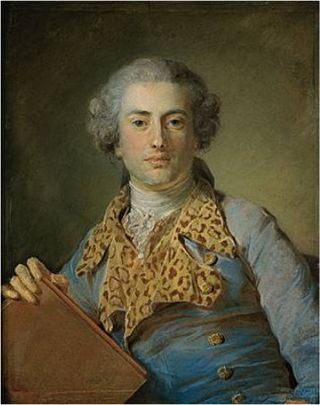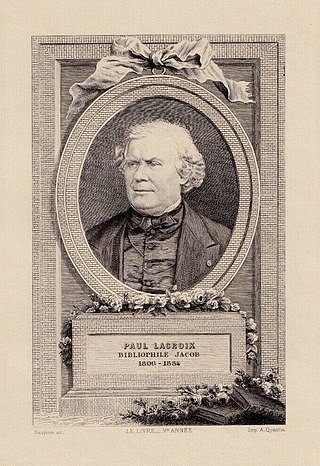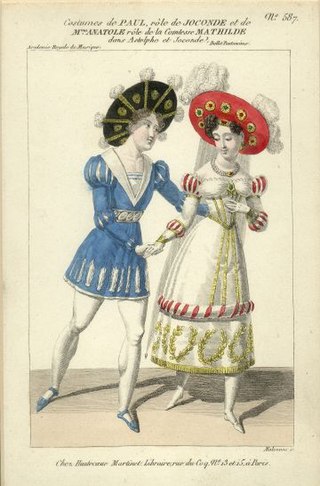| Chao-Kang | |
|---|---|
 | |
| Native title | Chao-Kang |
| Choreographer | Louis Henry |
| Music | Luigi Carlini |
| Premiere | 16 October 1834 |
| Genre | Pantomime |
| Type | Ballet |
Chao-Kang is a French ballet-pantomime created in 1834 and performed in Paris during the Romantic period.
| Chao-Kang | |
|---|---|
 | |
| Native title | Chao-Kang |
| Choreographer | Louis Henry |
| Music | Luigi Carlini |
| Premiere | 16 October 1834 |
| Genre | Pantomime |
| Type | Ballet |
Chao-Kang is a French ballet-pantomime created in 1834 and performed in Paris during the Romantic period.
Chao-Kang was directed by French choreographer Louis Henry with music arranged by Italian composer Luigi Carlini. Henry authored the work and developed the choreography. [1] The ballet, presented in three acts, was in the pantomime genre and concluded with an epilogue by Louis Henry. [2] Henry appears to have undertaken a detailed study of the customs and ways of life among China's people. [2]
On 16 October 1834, Chao-Kang was premiered at the Théâtre Nautique, with Louis Henry in the title role and Madame Laurent as Chao-Kang's fiancée. [3] The cast also featured Louis-François Gosselin as Han-Tsou and Télémaque, a dancer, in the role of a young Mandarin. [4] The set and costume design drew inspiration from Ancient China and the Xia dynasty, recognized as China's first recorded dynasty.
| Role | Première cast, 16 October 1834 (Cast member: - ) |
|---|---|
| Chao Kang | Louis Henry |
| Chao Kang's fiancee | Madame Laurent |
| Han-Tsou | Louis-François Gosselin |
| Young Mandarin | Télémaque |
| Old Mandarin | Laurent |
The ballet combines moral and political themes, celebrating the triumph of rightful rule over usurpation. [2] Chao-Kang follows the story of Chao Kang, the son of the dethroned Tai Kang of the Yu dynasty. The antagonist is a wealthy Chinese lord who, despite controlling vast provinces and treasures, desires the crown. Lacking the bravery to win it in battle, he seizes it deceitfully, forcing the emperor into exile. [2] After his mother, Empress Ming, escapes a massacre, she raises him in hiding as a shepherd boy. When his identity is discovered, the governor seeks to restore him to the throne. At 30, Chao Kang leads a successful conspiracy against the usurper, restoring him as the legitimate ruler. [5] As punishment, the illegitimate ruler is publicly displayed in an iron cage to the people's satisfaction. [2]

Jean-Georges Noverre was a French dancer and ballet master, and is generally considered the creator of ballet d'action, a precursor of the narrative ballets of the 19th century. His birthday is now observed as International Dance Day.

Paul Lacroix was a French author and journalist. He is known best by his pseudonym P.L. Jacob, bibliophile, or Bibliophile Jacob, suggested by his great interest in libraries and books generally.
In the French courts during the 17th Century, ballet first begins to flourish with the help of several important men: King Louis XIV, Jean-Baptiste Lully, Pierre Beauchamps, and Molière. The combination of different talents and passions of these four men shaped ballet to what it is today.
Louis Fuzelier was a French playwright.

Antoine Paul known professionally as Paul, was a French ballet dancer.

Les Fêtes Chinoises is an 18th-century ballet by Jean-Georges Noverre (1727–1810). The exact date of the ballet's composition is unknown.

The Salle Ventadour, a former Parisian theatre in the rue Neuve-Ventadour, now the rue Méhul, was built between 1826 and 1829 for the Opéra-Comique, to designs by Jacques-Marie Huvé, a prominent architect. The original theatre had a capacity of 1,106, but was subsequently taken over by the Théâtre-Italien and expanded to a capacity of 1,295 in 1841, thereafter becoming perhaps most noteworthy as the theatre in which the majority of the operas of the Italian composer Giuseppe Verdi were first performed in France. When the Théâtre-Italien company went out of business in 1878, the theatre was converted to offices.
Léon Pillet, was a 19th-century French journalist, civil servant, and director of the Paris Opera from 1840 to 1847. A political appointee, he was probably the least successful director of the Paris Opera in the 19th century.
Théâtre du Silence was a dance company created by Jacques Garnier and Brigitte Lefèvre.
Adolphe Benoît Blaise was an 18th-century French bassoonist and composer, died in 1772.

Pierre-Angélique-Germain Quériau was a French dancer and choreographer in the first half of the 19th century, born c. 1790 and died in Montmartre 14 July 1850.
Marie-Jeanne Larrivée, born Marie-Jeanne Lemière was a French soprano.

Jeanne Clémence Floriet called Jane Margyl was a French mezzo-soprano. She began her career as a mime artist at the Folies Bergère starring in several productions. After voice studies, she appeared in operas from 1902 onwards. She first appeared at the Paris Opera in 1905 as Dalila in Samson et Dalila by Saint-Saëns, and took other leading roles there.

Ozaï; ou l'Insulaire is a French ballet-pantomime created by Jean Coralli and performed in the late 1840s. It succeeded Le Diable boiteux and was Coralli's last ballet.

L'île des pirates is a French ballet-pantomime created in 1835 and performed during the Romantic period.

Louis Henry was a French dancer and choreographer.
Luigi Carlini was an Italian composer specializing in opera, with a career centered in Milan in the 19th century.

Louis-Stanislas Montjoie was an 18th century French ballet dancer and actor who performed in opéra-ballets at the Opéra de Paris.
Louis-François Gosselin was a French ballet dancer who performed as a premier danseur at the Opéra de Paris and Her Majesty’s Theatre in London.

Victoire Saulnier, known professionally as Mlle Victoire Saulnier was an 18th century French ballet dancer who performed at the Opéra de Paris in France and the King's Theatre in London.